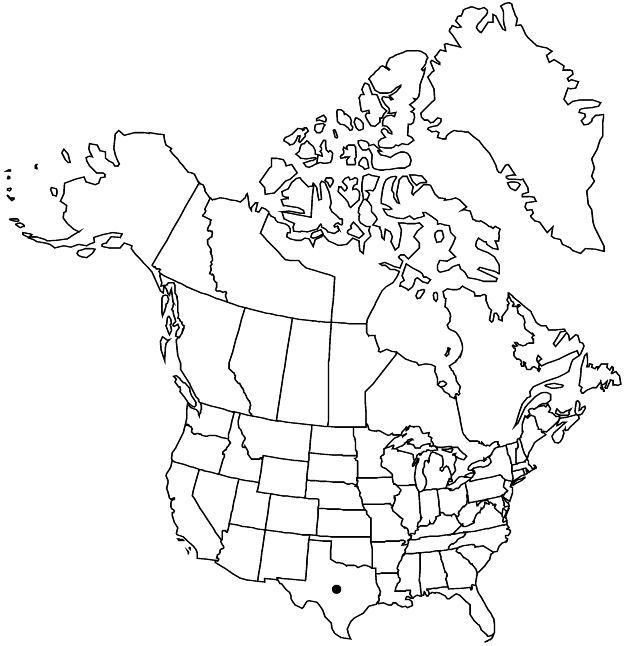Prunus texana
Syn. Pl. 3: 45. 1842. not Prunus glandulosa Thunberg 1784
Shrubs, sometimes suckering, much branched, 5–15 dm, sometimes weakly thorny. Twigs with axillary end buds, tomentose. Leaves deciduous; petiole 1–4 mm, tomentose, eglandular; blade elliptic to oblong-elliptic, 1.1–4 × 0.4–1.1 cm, base cuneate to obtuse, margins dentate, teeth blunt, glandular, glands discoid, apex acute, obtuse, or rounded, abaxial surface hairy to canescent, adaxial hairy. Inflorescences solitary flowers or 2-flowered fascicles. Pedicels 1–5 mm, tomentose. Flowers blooming before or at leaf emergence; hypanthium campanulate, 2 mm, tomentose externally; sepals reflexed, triangular, 1–1.7 mm, margins glandular-toothed, surfaces tomentose; petals white, elliptic, 3–5 mm; ovaries hairy. Drupes usually yellow to greenish yellow, sometimes tinged with red, ovoid, compressed, 8–15 mm, velutinous; hypanthium tardily deciduous; mesocarps fleshy; stones ovoid, ± flattened.
Phenology: Flowering Feb–Mar; fruiting Apr–Jun.
Habitat: Deep sand, plains and sand hills, grasslands, oak woods
Elevation: 0–200 m
Discussion
Prunus texana is endemic to south-central Texas from the Edwards Plateau southeast to the coastal plain.
Despite the peachlike fruits of Prunus texana, DNA evidence supports its placement among the native American plums (J. Shaw and R. L. Small 2005). The leaf margins look like those of no other North American species of Prunus. The teeth project perpendicular to the margins and are capped with disc-shaped glands.
Selected References
None.
